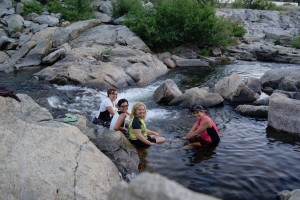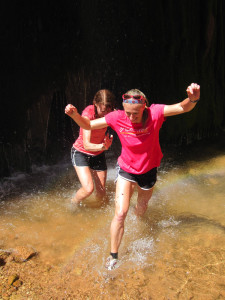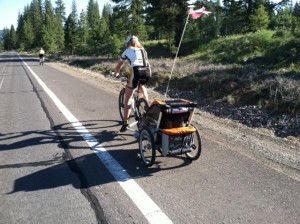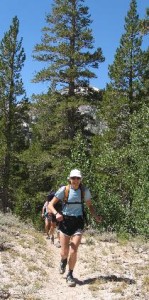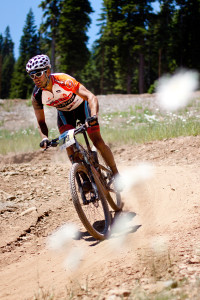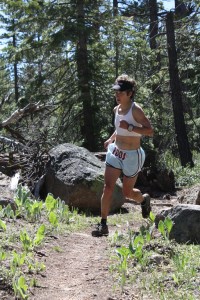Training with Truckee High XC Running Team
Last week Dr. Pasternak and I spoke with the Truckee High Cross Country running team and their parents. Over the next couple of months I will have the opportunity to assist Coaches Pat and Diana in providing a scientifically based injury prevention and performance conditioning program, and will be blogging about our weekly workouts. Dr. Pasternak and I also look forward to acting as ongoing resources for the kids and parents to address specific individual questions and/or concerns.
Before delving in to the nuts of and bolts of the Truckee High program, I wanted to share how my background and current position help mold my coaching and training philosophy.
Fitness has become big business. As a result it is important to understand the source and motivation of information – is it commercially motivated, selling products and books or is it scientifically, research derived. This is an important distinction for us at Silver Sage Sports Performance Center and o2fitness Coaching and Training where our integrated menu of services (Vo2 and lactate threshold testing, bike fitting, gait analysis, performance training and endurance coaching) are based on cutting-edge, scientific-based protocol.
It is equally important to know who is delivering the information. At o2fitness Coaching and Training, we strive to distinguish the practice of coaching and professionalize it. My unique background, with a 12-year career on the US National cycling team afforded the opportunity to work with the most prominent coaches, physiologists, biomechanists and nutritionist in the endurance world. Applying these systems as an elite international athlete helped mold my present coaching and training philosophy. Partnering with Dr. Pasternak at Silver Sage allows me to continue to support and balance this practical knowledge and experience with science.
I also feel strongly about investing in continuing education. This raises the professional bar providing the opportunity to learn from the most established, respected individuals and institutions in specific fields. To this end – I have mentored at Athletes’ Performance Training Center to hone my strength and conditioning practice; attended Specialized Bicycles BG fit certification to better understand cycling biomechanics and bike fit; and am currently mentoring with Chris Powers, USC Professor and researcher and Director of the Movement Performance Institute to develop a deeper understanding of functional biomechanics of the lower extremities as applied to running and cycling.
In helping assist Pat and Diana with the Truckee High school running programs – I hope generally to share my experience, as an elite athlete/competitor, coach/trainer and director of sports performance, regarding training for performance, race tactics as well as the mental aspect of training and racing. Specifically I hope to provide the team with a foundational , functional strength conditioning program, much of which will be based upon Chris Power’s return to sport, injury prevention and performance protocol.
Last week when we met the Truckee XC running team, we wanted to reinforce Coach Pat and Diana’s training philosophy. They are accomplished athletes and understand the importance and value of a well-balanced training program for injury prevention and performance. In my opinion this approach will be pivotal their athlet
There is high prevalence of running injuries – but we do not have to resign ourselves to this seemingly foregone conclusion. We can be proactive to improve our training, conditioning and mechanics to avoid injury.es development.
In my opinion there are basic cornerstones to injury prevention and improved performance – they go hand in hand. These include – a gradually progressed, systematic training plan; supporting non-running foundational functional strength; good lifestyle choices; and sound mechanics.
In a nutshell an effective training plan is – individualized based on the individual athletes’ current fitness and future goals; systematically developed over a period of time providing a base and foundation of muscular endurance; and gradually progressed in volume and intensity. It also – incorporates a variety of workouts to train and develop all physiological systems and physical attributes; includes supplemental endurance training (swimming, cycling, cross-country skiing) providing mental and physical variety; and emphasizes quality intensity and quality rest/recovery.
It is important that runners are willing to change their mindset and carve time out of running time for general and sport specific foundational, functional stability and mobility. This includes single leg, hip/pelvis and trunk stability as well as strategies to improve range of motion and symmetry such as yoga.
Injury prevention is also effectively supported by, consistent, attention to detail and adopting a life fully committed to an integrated, healthy lifestyle including sufficient sleep, nutrition and hydration.
Finally we can train improved mechanics to prevent injury and improve performance. Chris Powers’ research suggests – its all about improved shock absorption and stability. He has found we can effectively absorb and reduce the magnitude of ground forces by more flexion in hips, knees and ankles. As a result of greater hip flexion and slight torso tilt, we also effectively activate and utilize our glutes allowing us to redirect the ground force toward our center of mass, reducing the torque on the knee.
To be effective in our running movement we need to establish that body position that allows the quads and glutes to act as shock absorbers, and the glutes to stabilize and decelerate the hips as the foot contacts the ground.
Power’s research has found that running injuries are occurring due to a quad dominant strategy (relied upon to a greater extent by women and girls) which takes the glutes out of the activity, placing a majority of the torque from the ground forces on the knee. He contends that we have all become more quad dominant in our activities due to our sedentary lifestyles – binding our hip flexors, inhibiting our abilities to utilize our glutes and consequently weakening them. This also leads to recruitment of the weaker quad and hamstrings – potentially leading to overuse injuries.
Improving mechanics to provide injury prevention and performance demands more than pure strength components include – muscular strength in the trunk, hips and lower extremities to provide eccentric shock absorption, concentric force and stability; neuromuscular activation; mobility/range of motion of joints and muscles; and proper movement.
These will be our goals in the Truckee High Cross-Country running teams conditioning program. Stay tuned.



